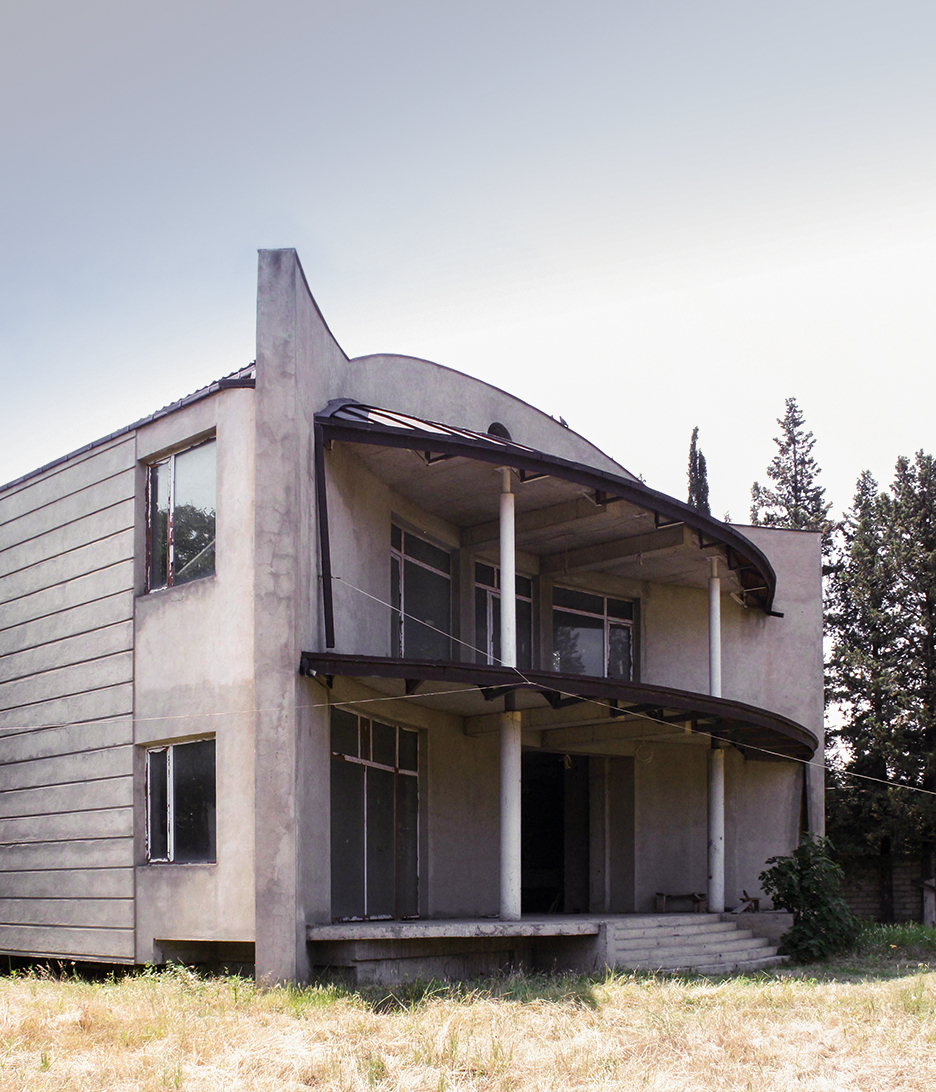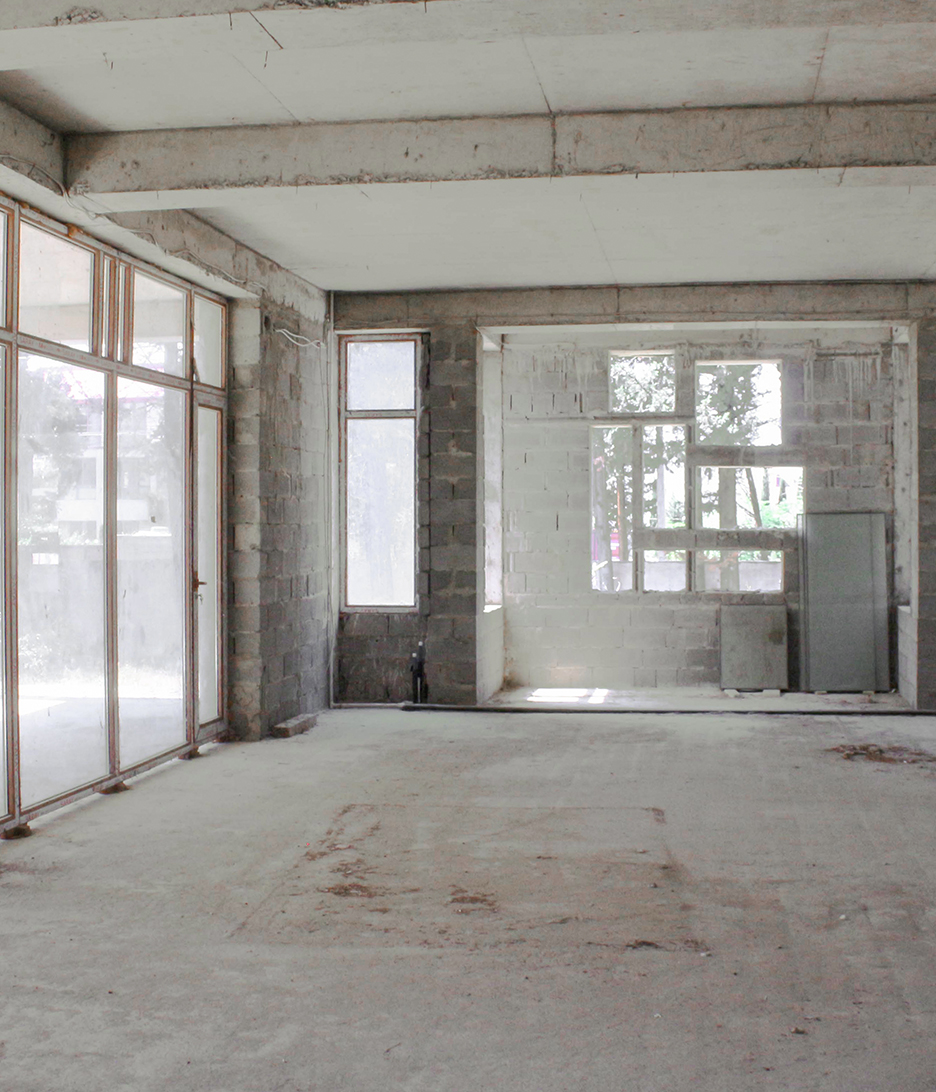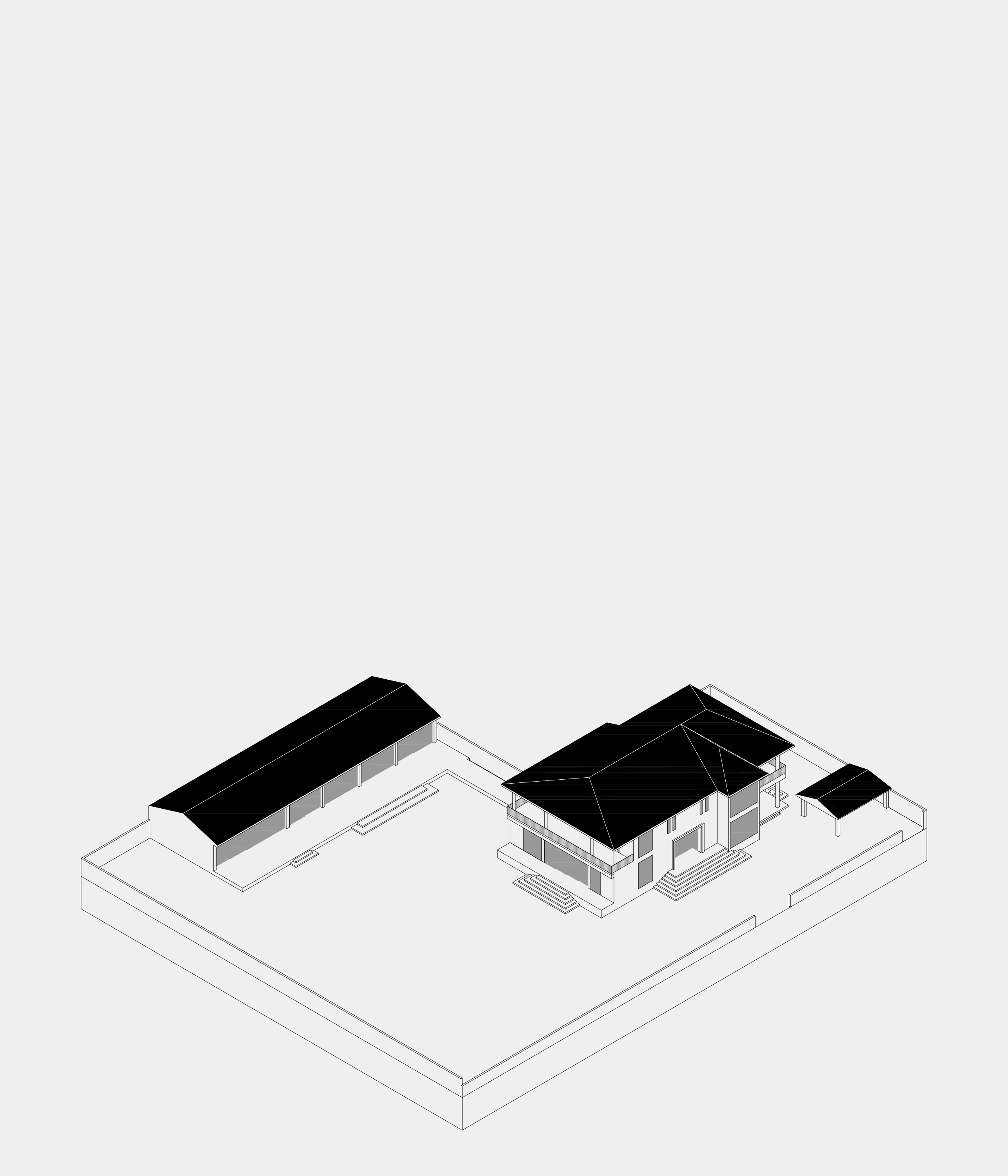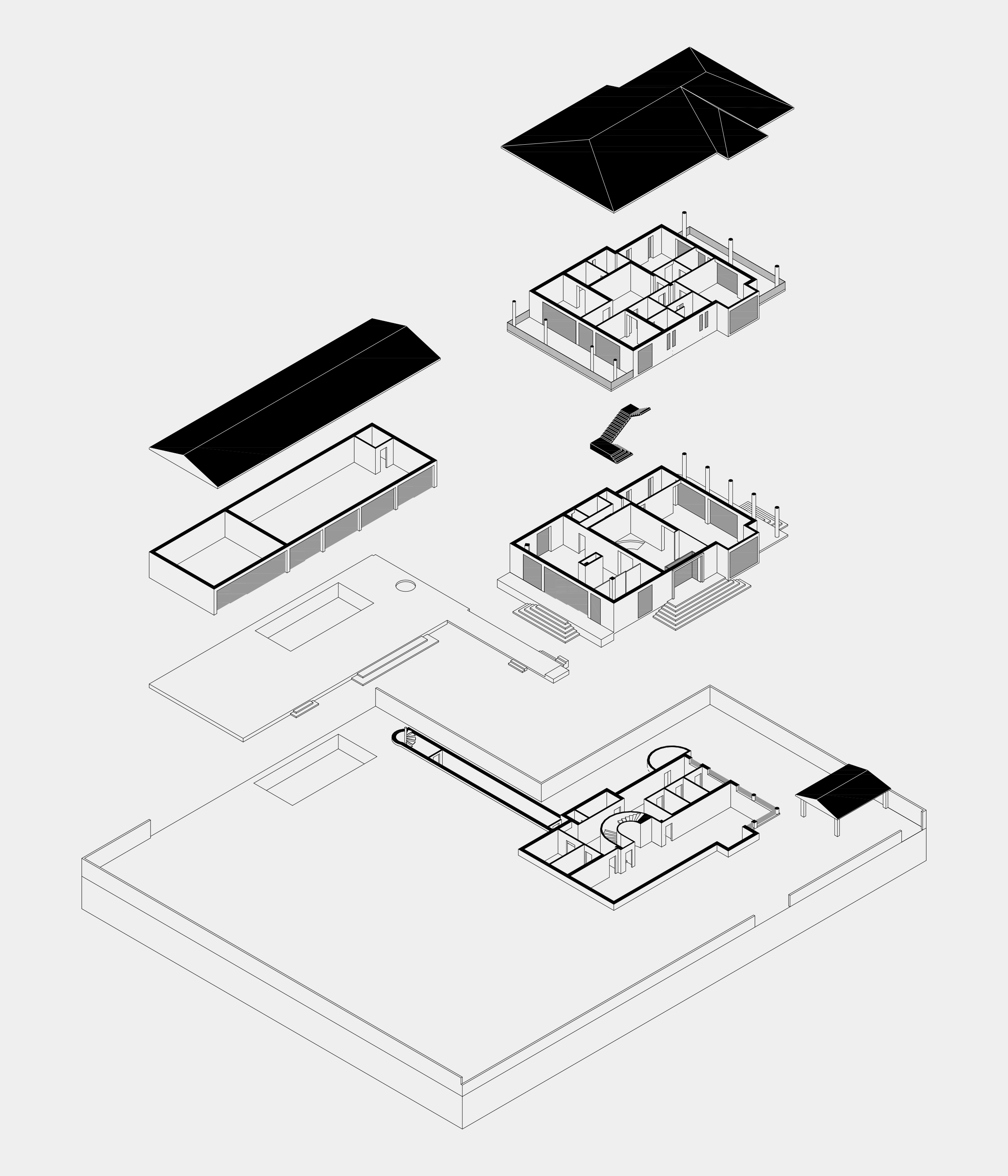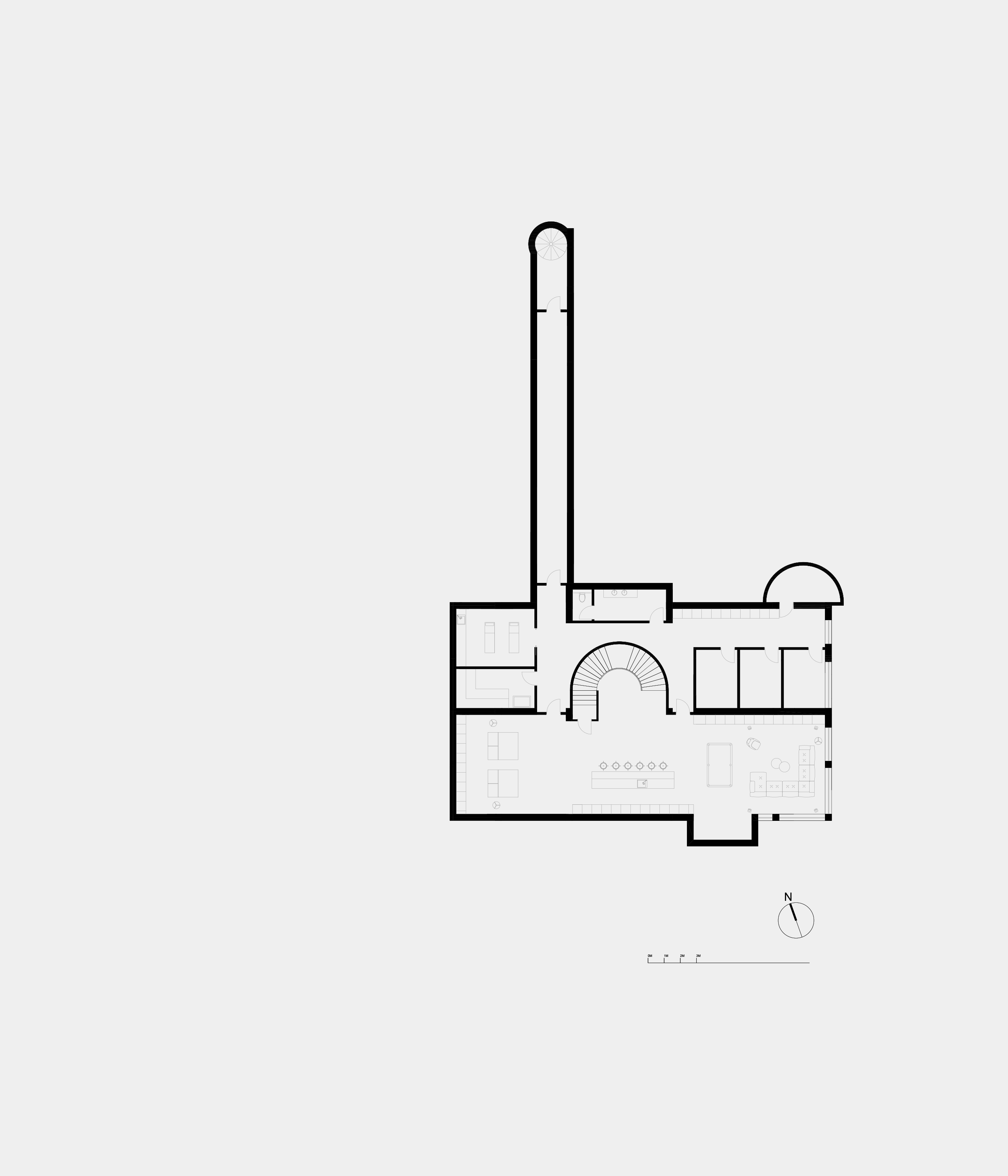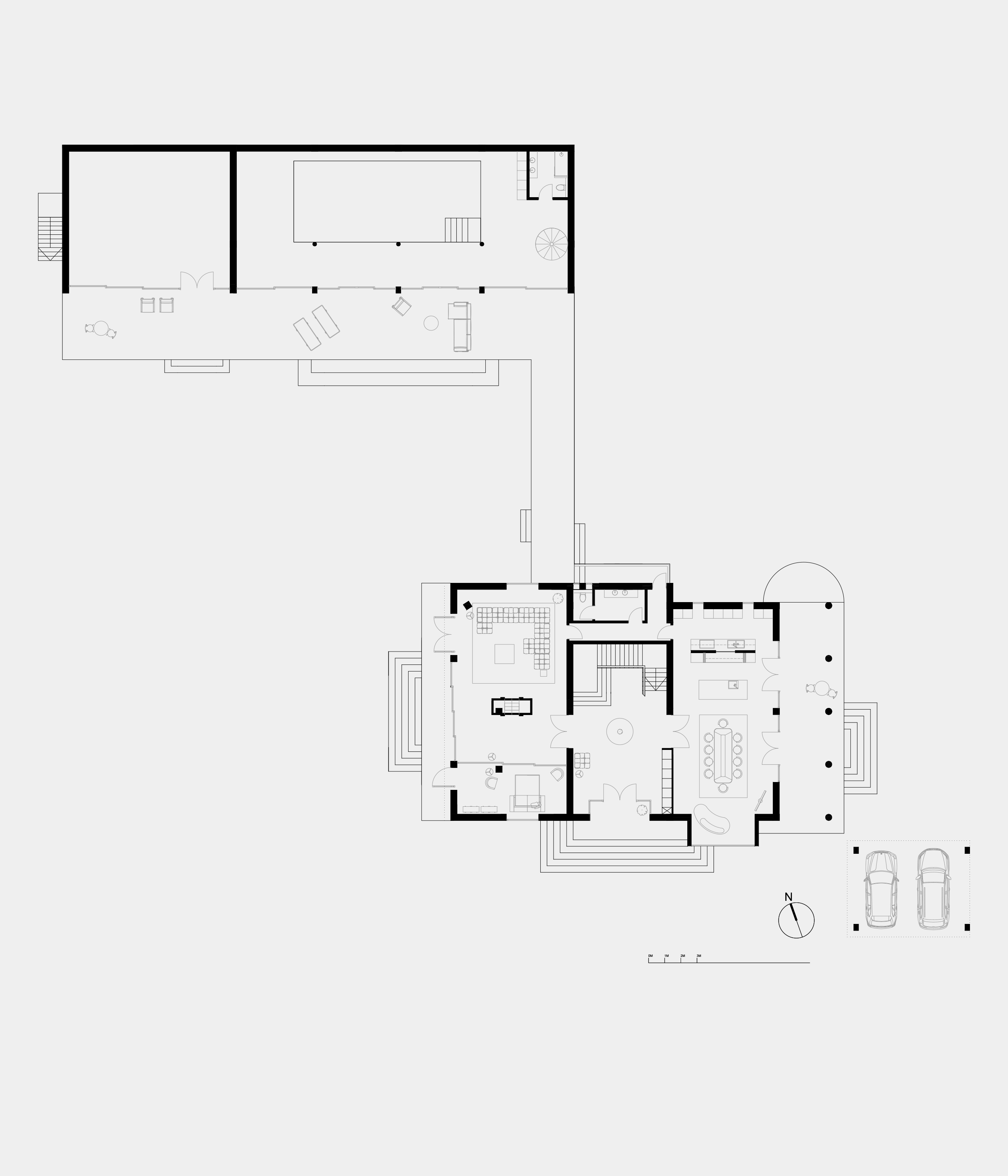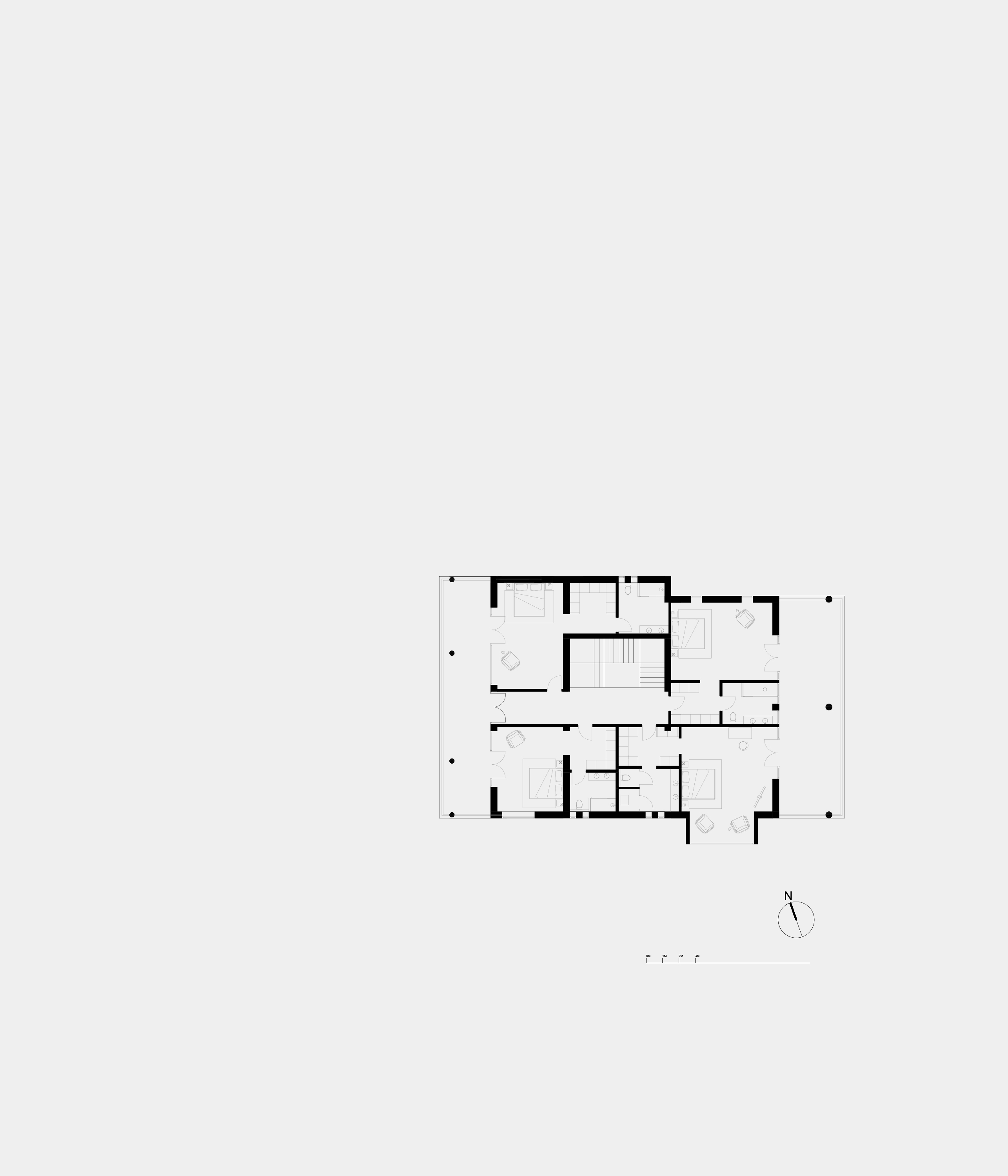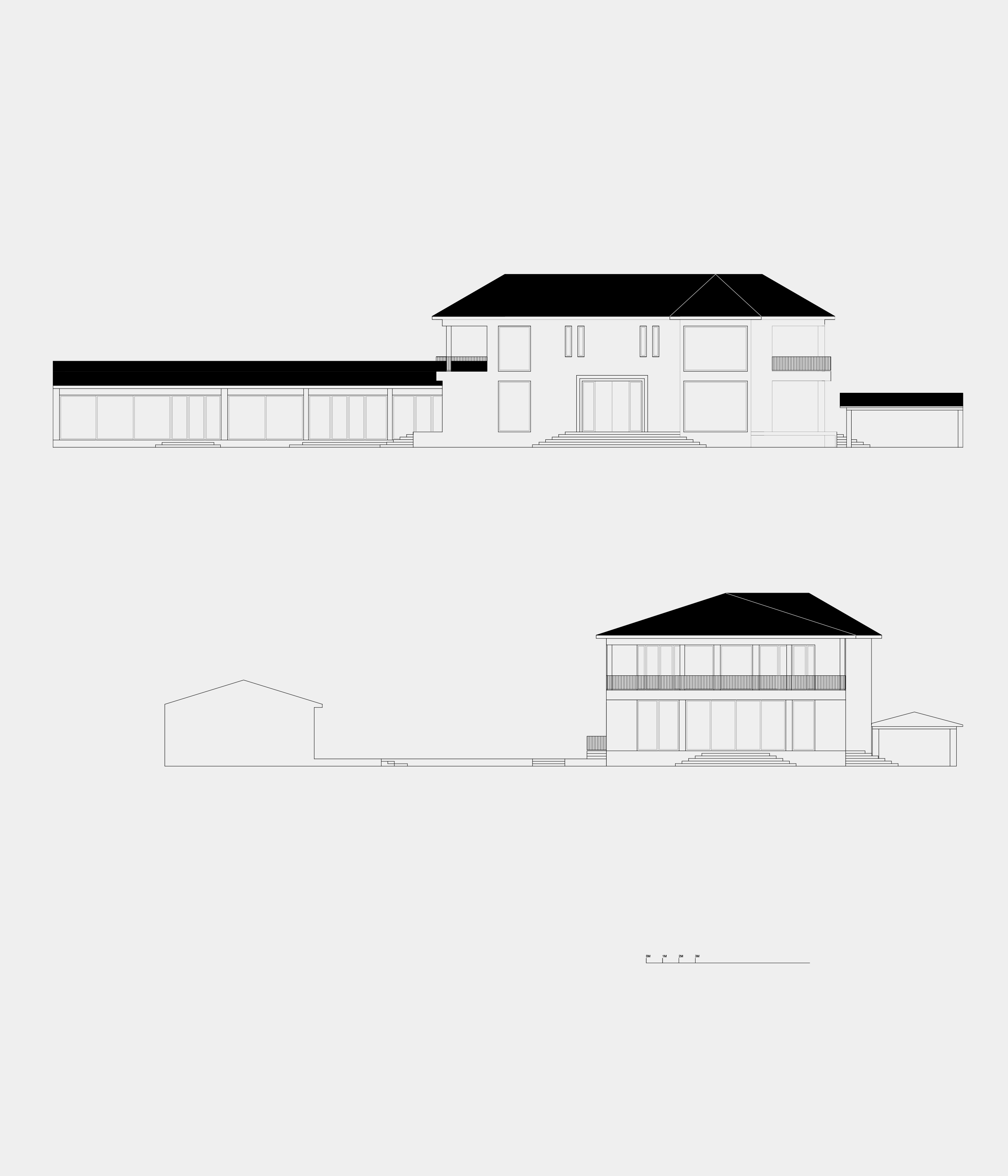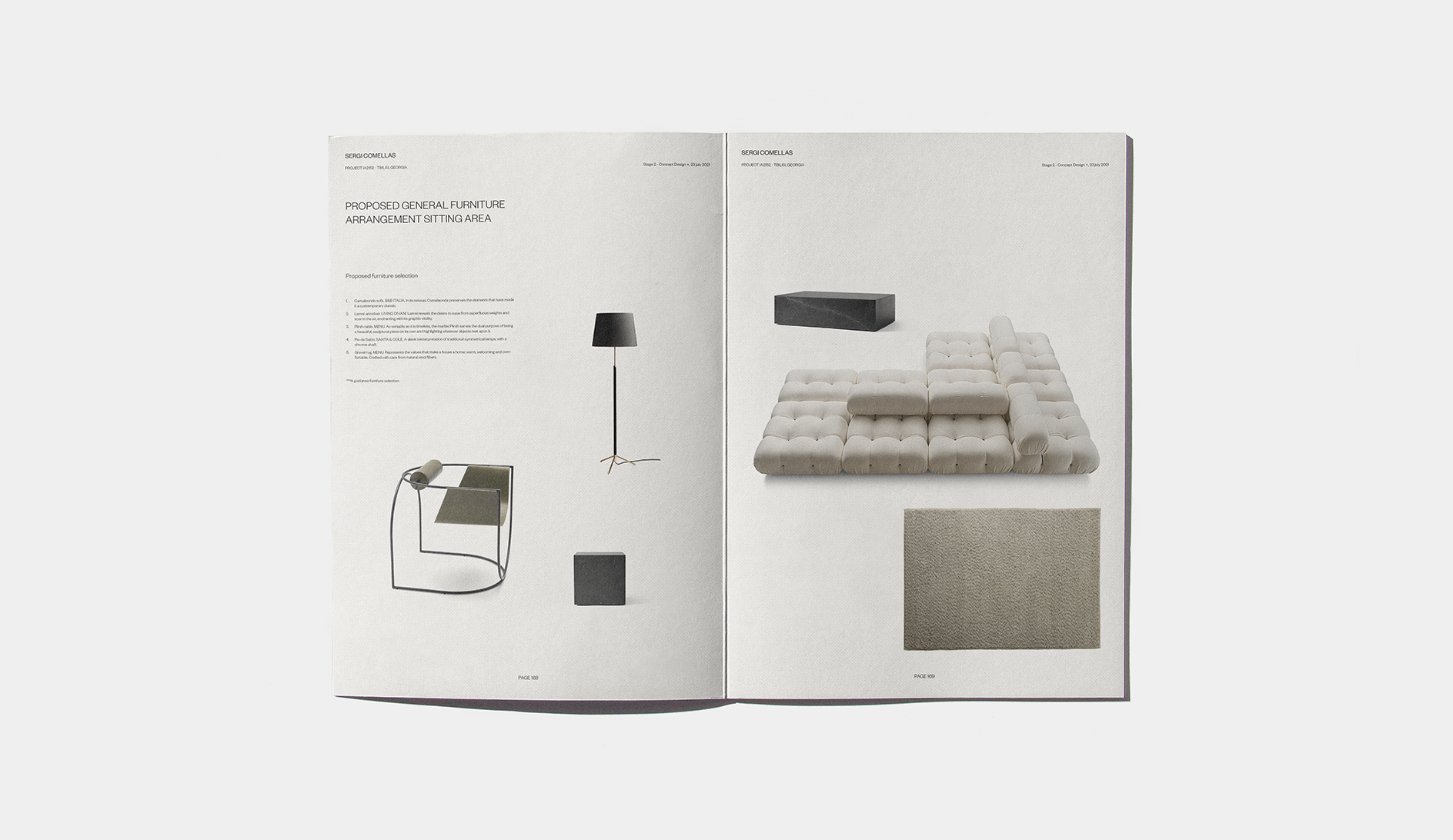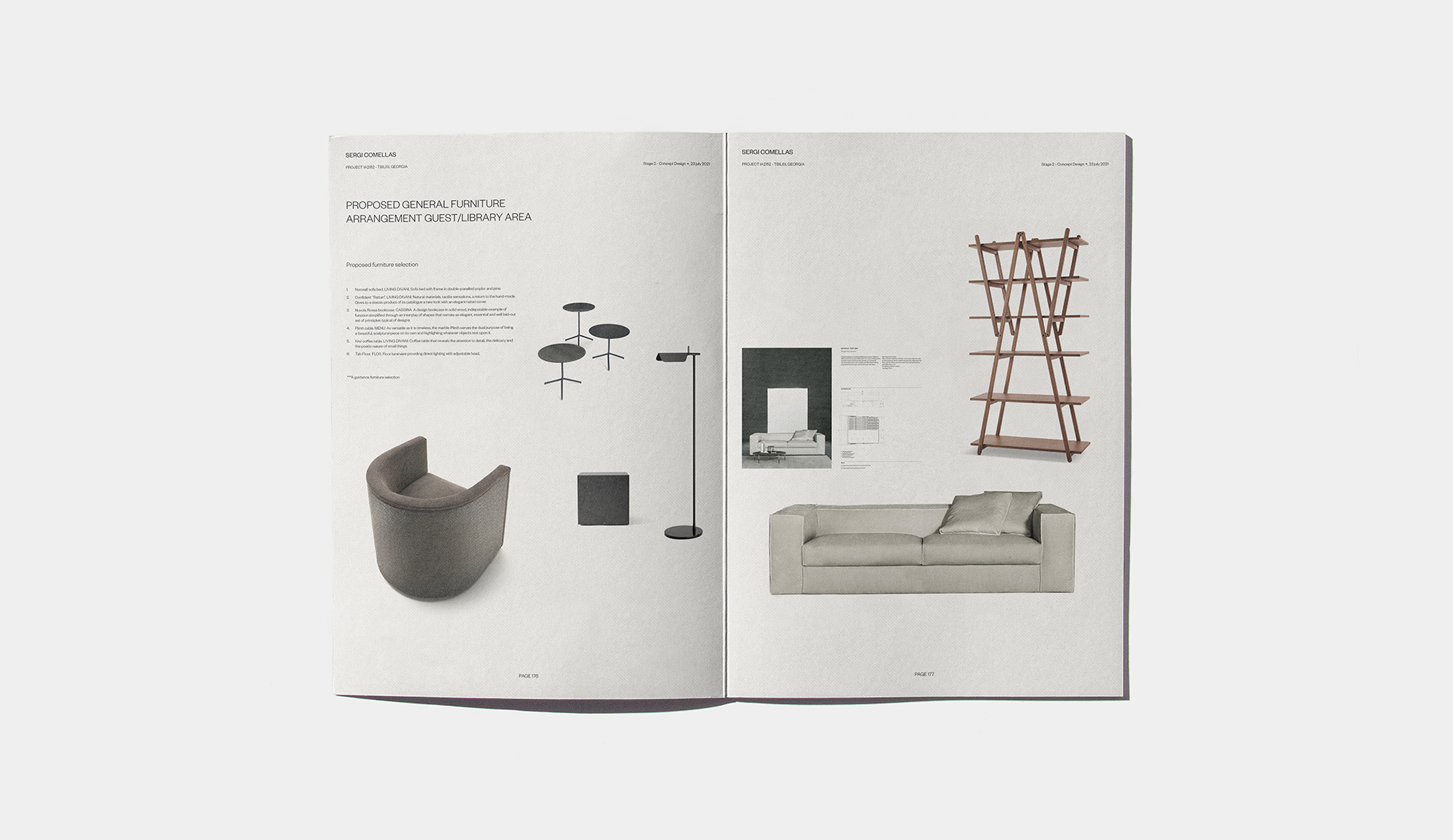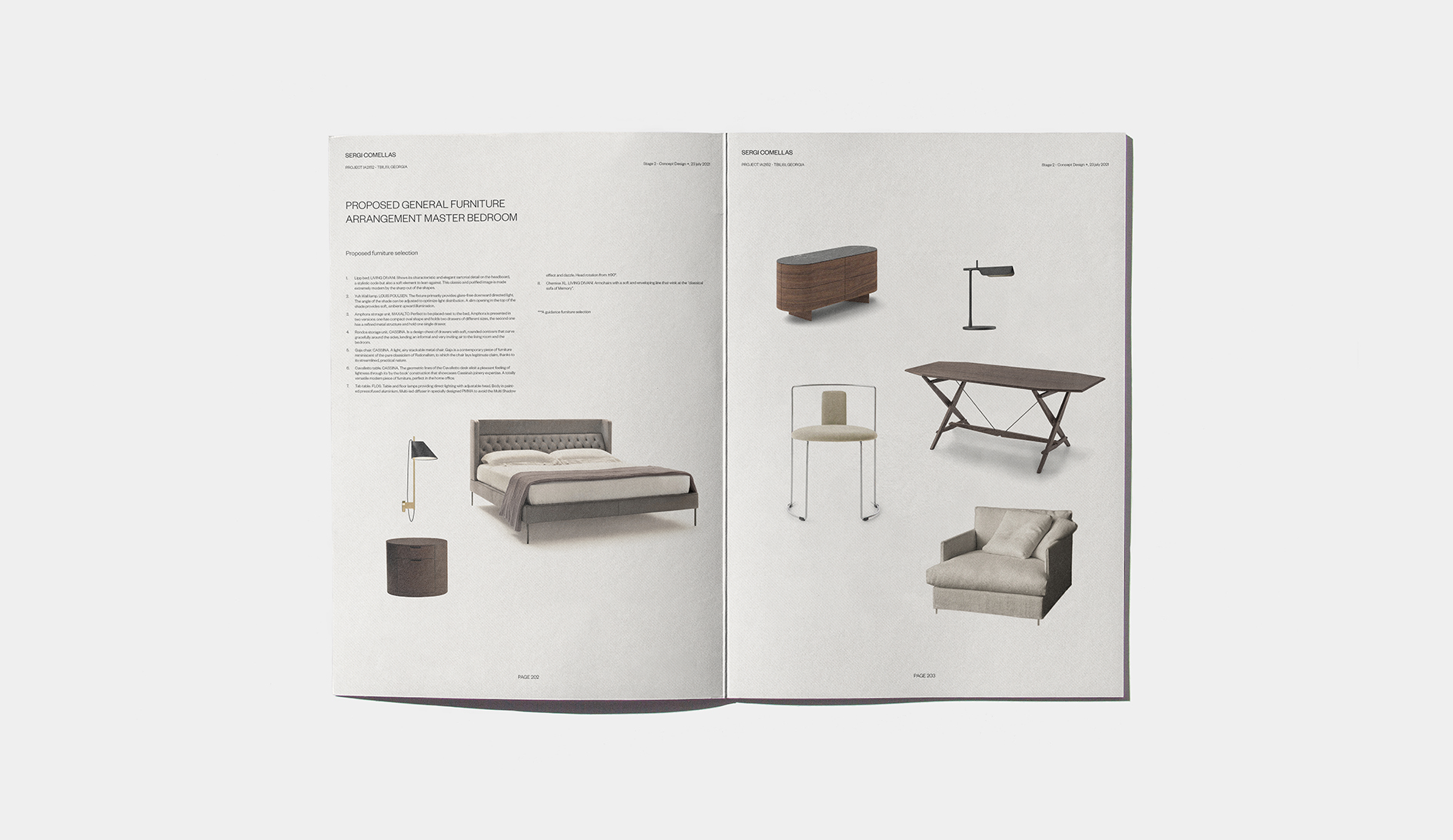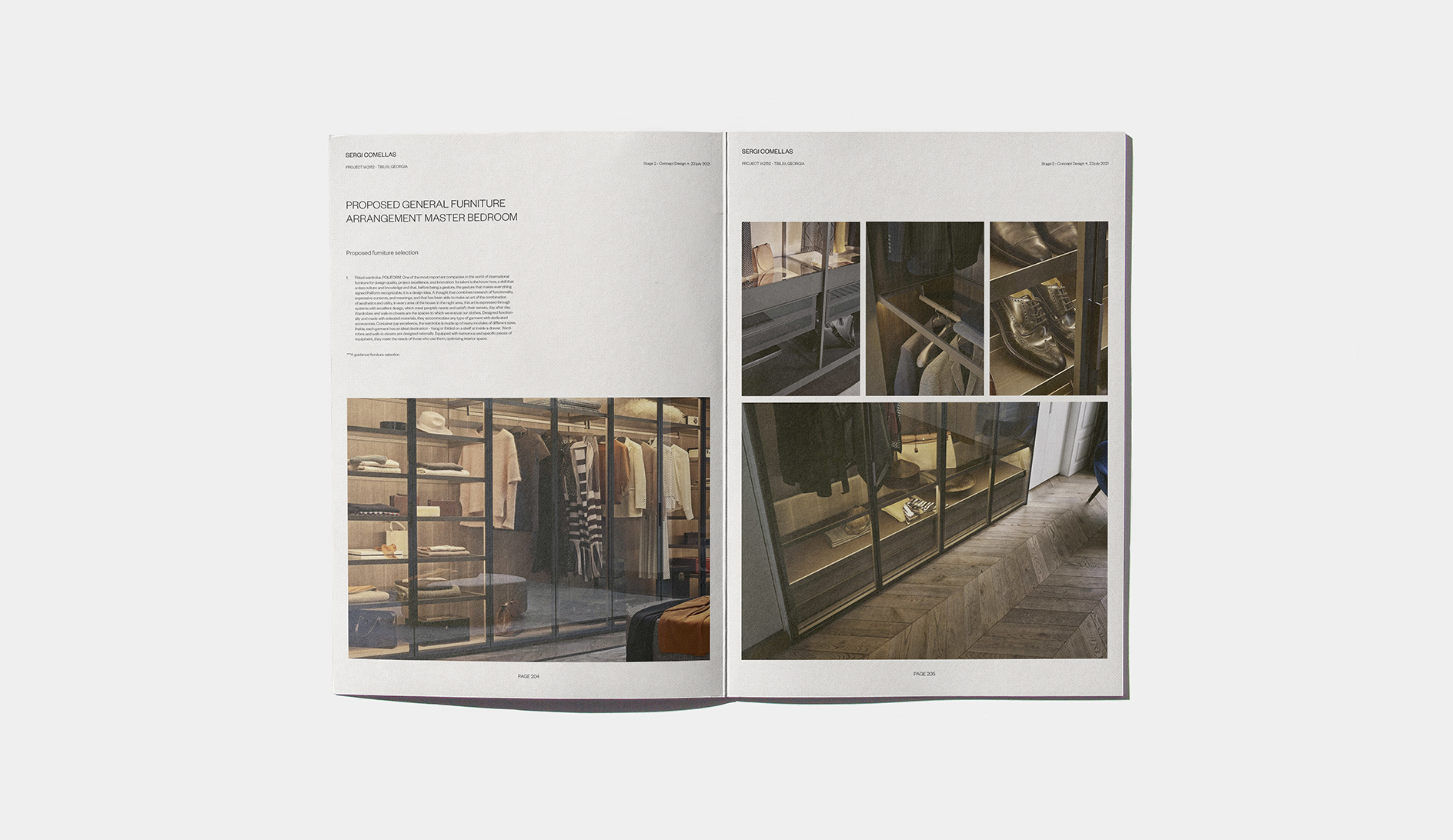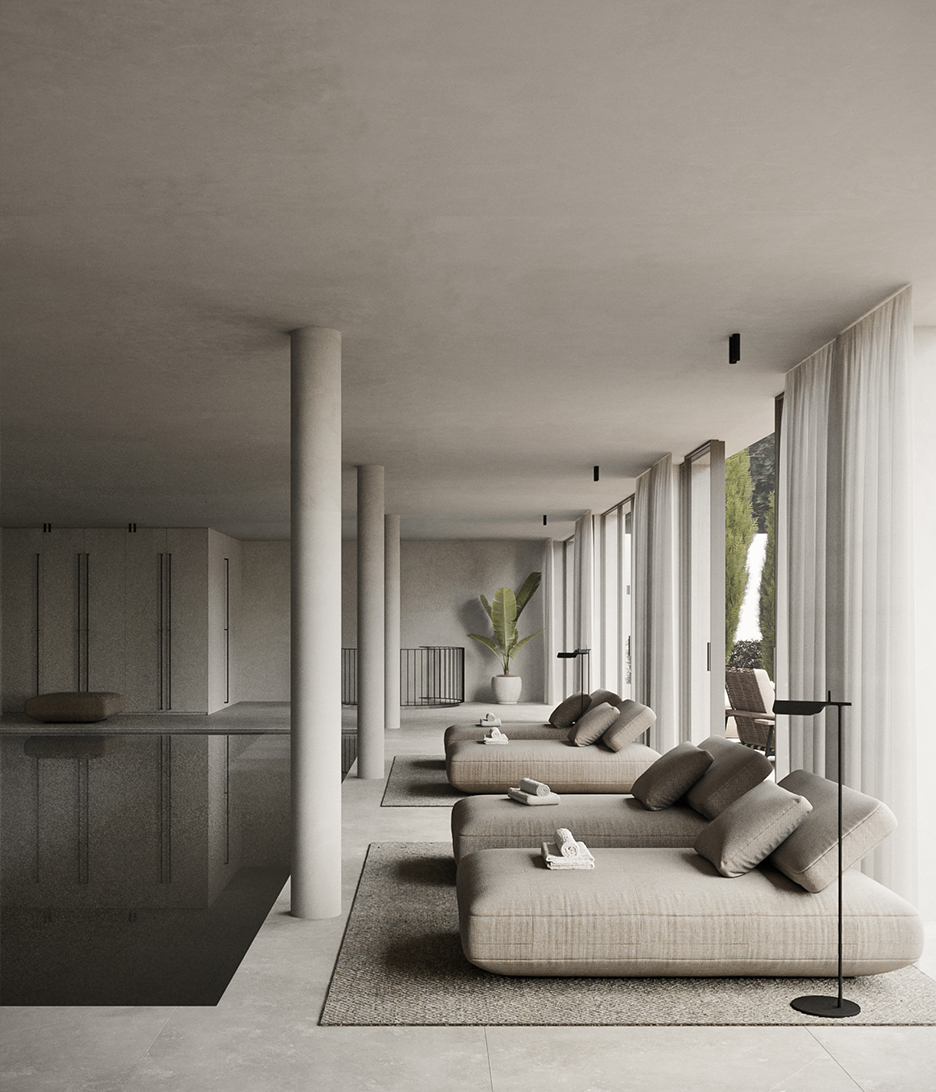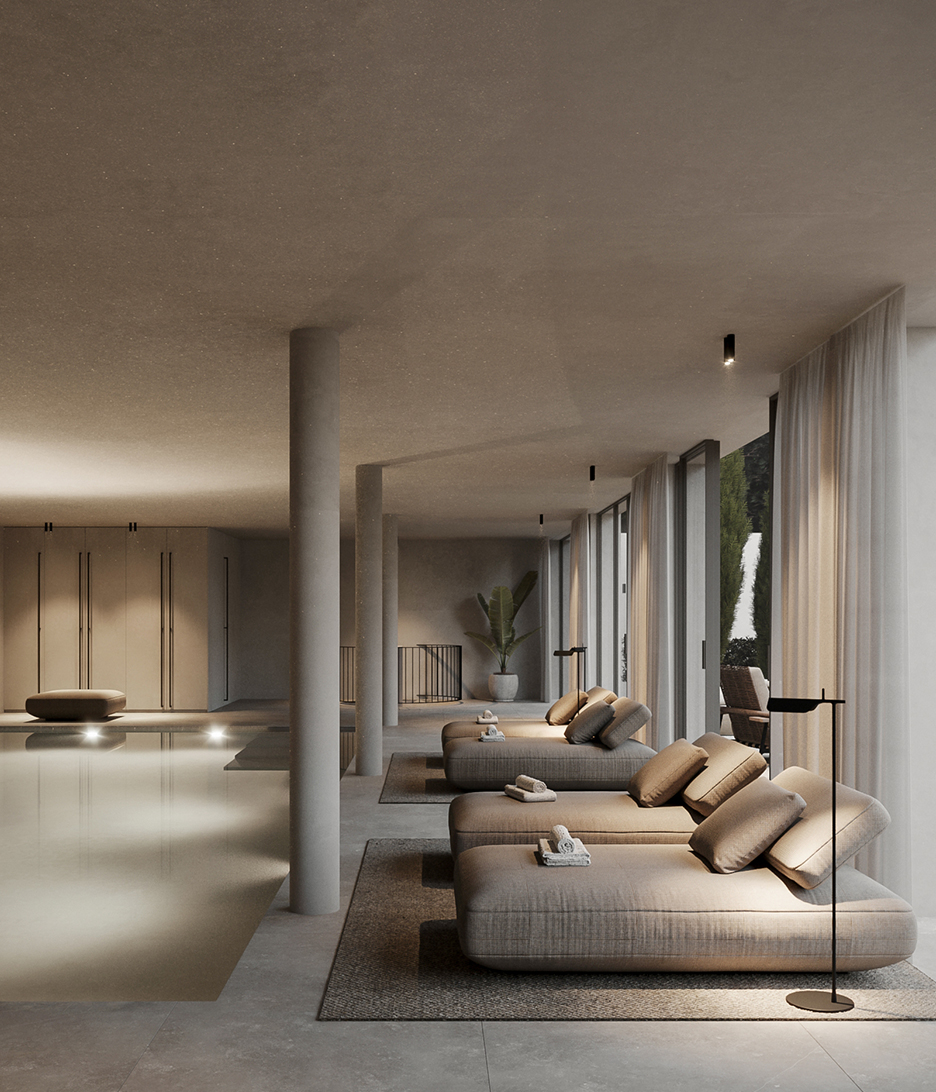TOWN HOUSE
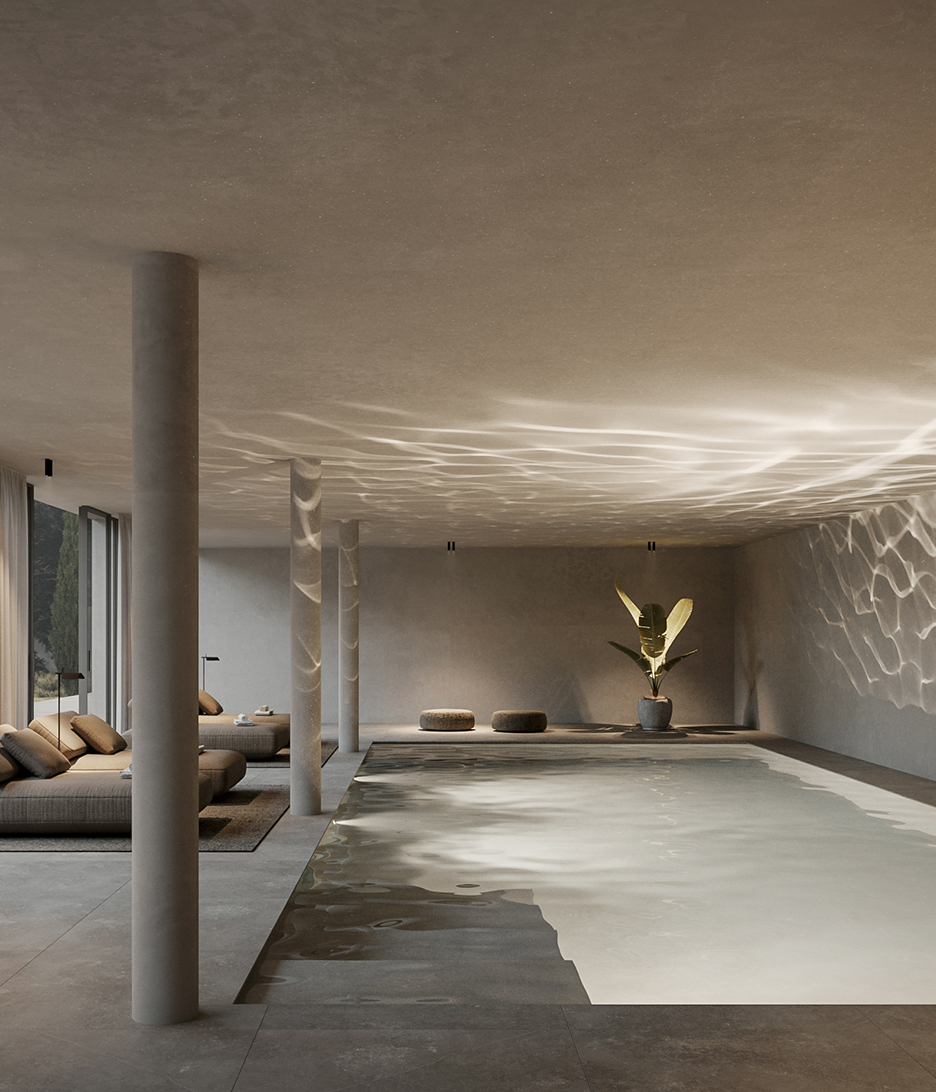
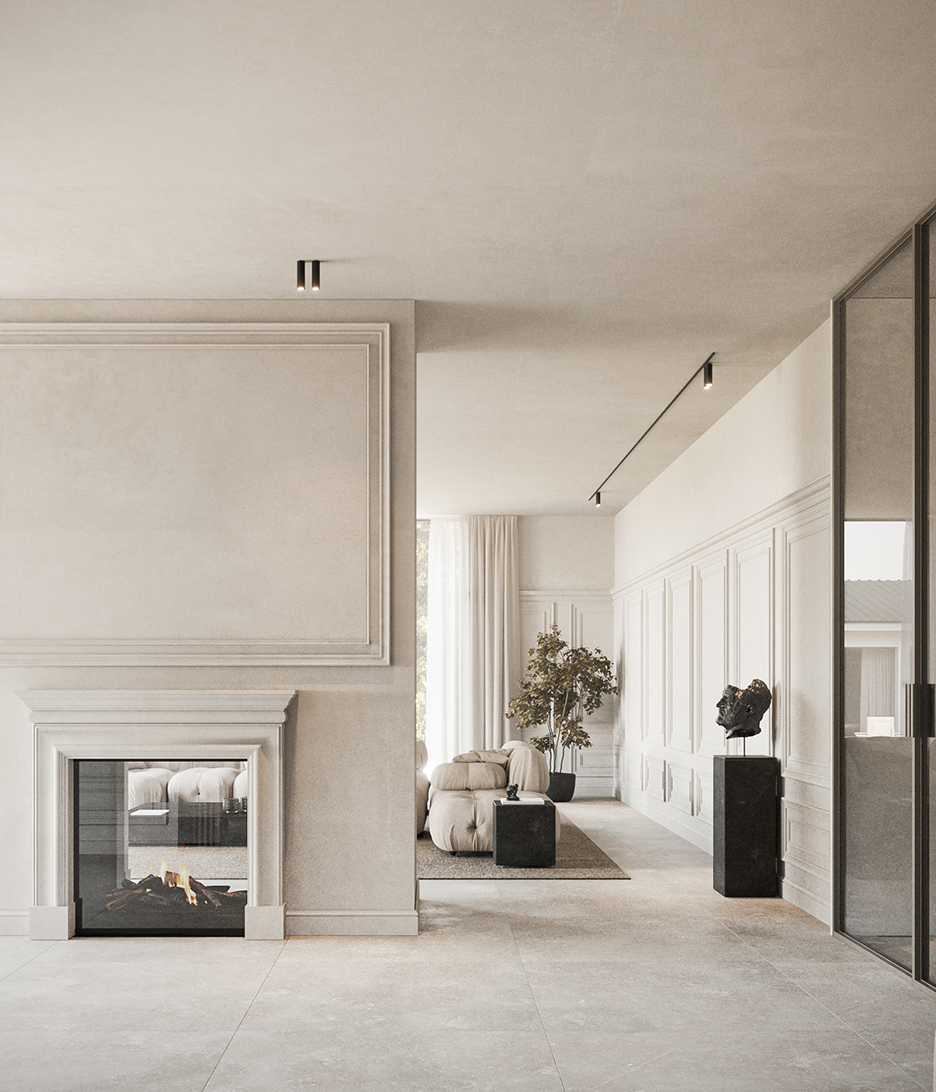


One of the challenges was conceptualizing the functionality of the house and lifestyle towards minimalism as illustrated, but also bringing it closer to a somewhat more classic style as desired by the client.
It used to be difficult to imagine the possibility of doing remote projects such as this one in the past, but thanks to new technologies, we could work on this project closely with our client.
As in all our projects, we perform an exercise of exploring and comprehending what elements we find before the project starts and whether it makes sense to use them as a fundamental part of the design approach.
As in all our projects, we perform an exercise of exploring and comprehending what elements we find before the project starts and whether it makes sense to use them as a fundamental part of the design approach.
Our first challenge was understanding the reason for the building of the home as it was, through understanding the client’s requirements, and finding out what moved them to design such a characteristic house. We wanted to assess the possibility of following the same fundamentals and being respectful of the current design or suggesting a new design approach.
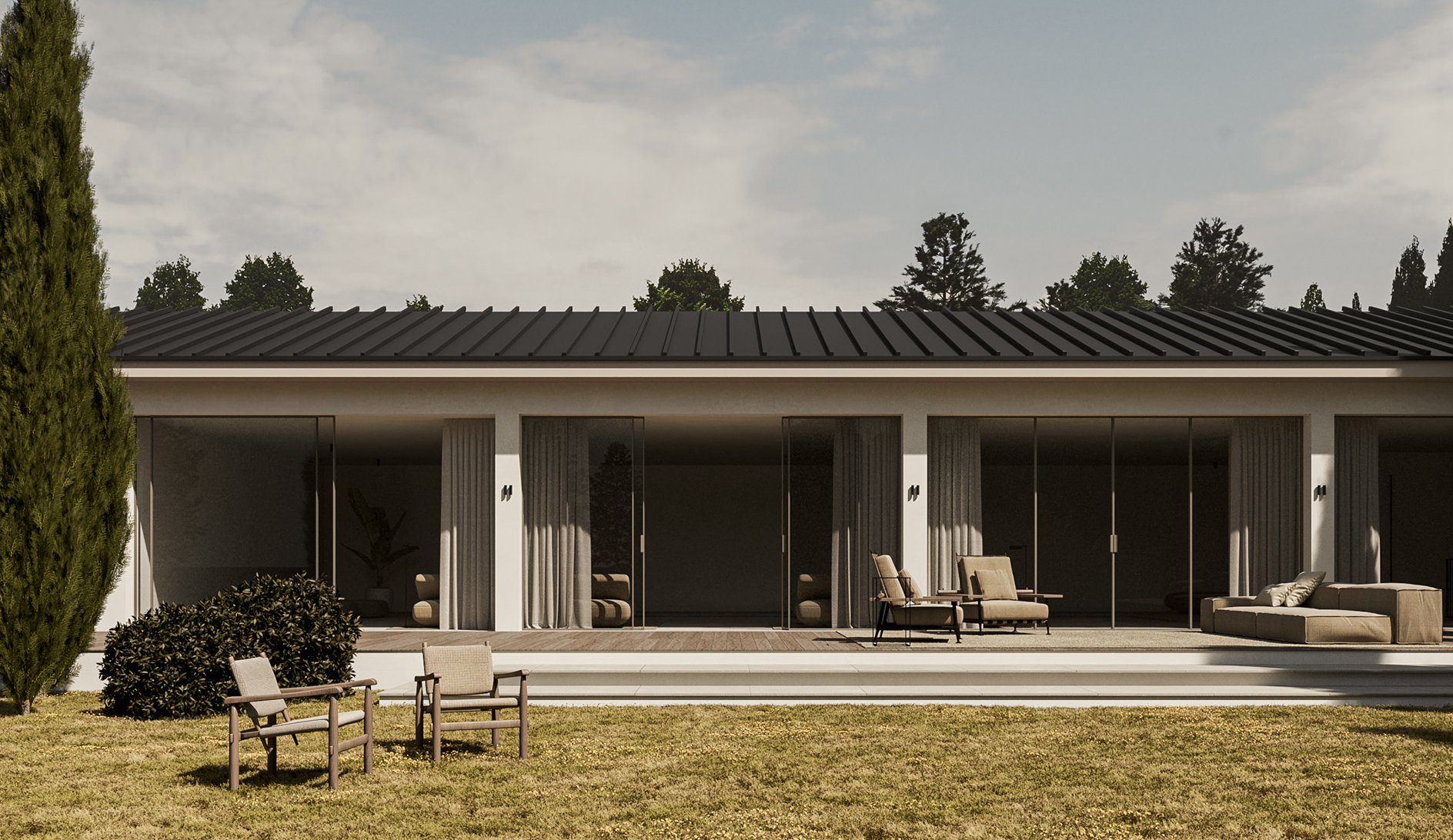
A first attempt was made to maintain what was built to minimize the impact of the reinterpretation of the entire house with a new project and space functionality.
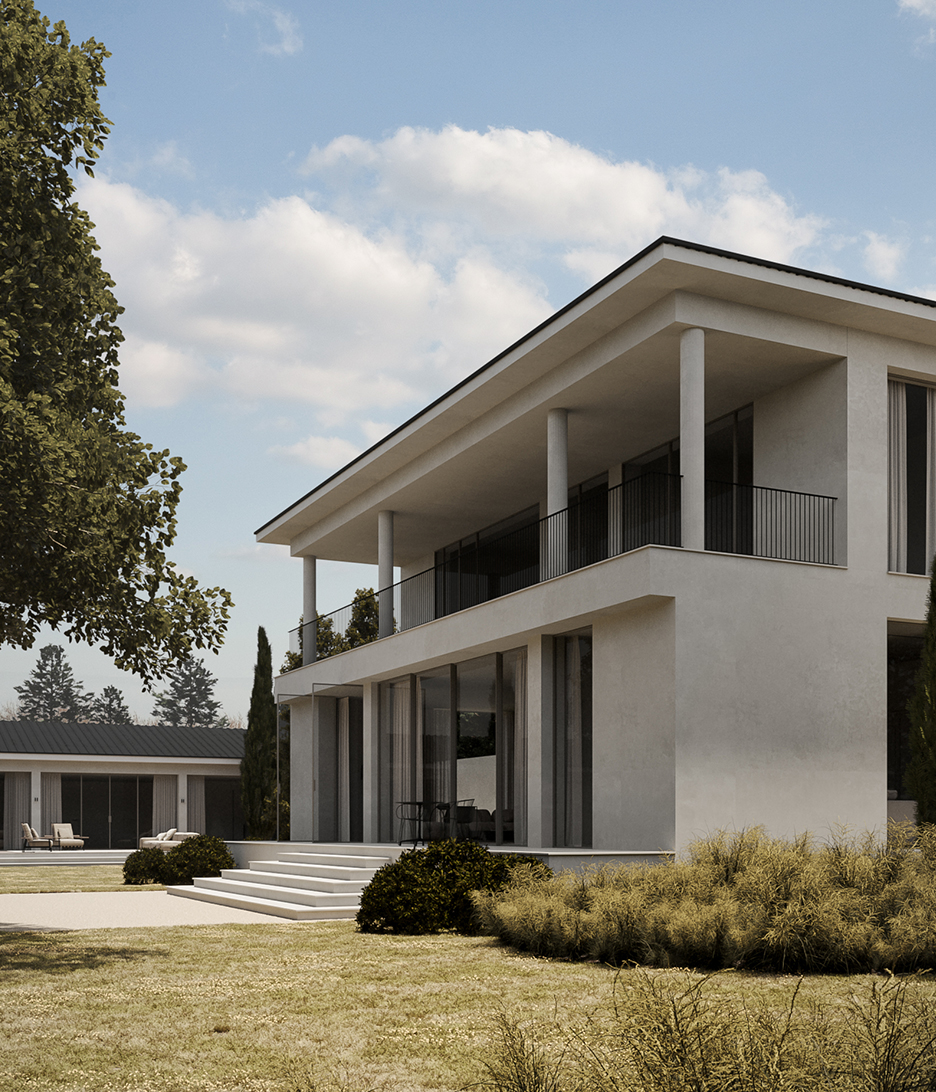
A lot of time was spent on the initial part of the project to understand, interpret and evaluate what had been built. We wanted to minimize the impact of changing the functionality and volume of a constructed building. To carry out this exercise, we kept almost the entire structure and only projected new circulations and connections towards the outside areas of the house.
We focused on creating a logical circulation layout around a central staircase. Through this, we managed to separate all the spaces for privacy.
We focused on creating a logical circulation layout around a central staircase. Through this, we managed to separate all the spaces for privacy.
One of the new strategies was to relocate the house’s main entrance and simultaneously attain larger, free spaces designed to accommodate groups of people. One of the client’s main requirements was that it was to be a house to hold gatherings, parties or banquets with a large number of guests.

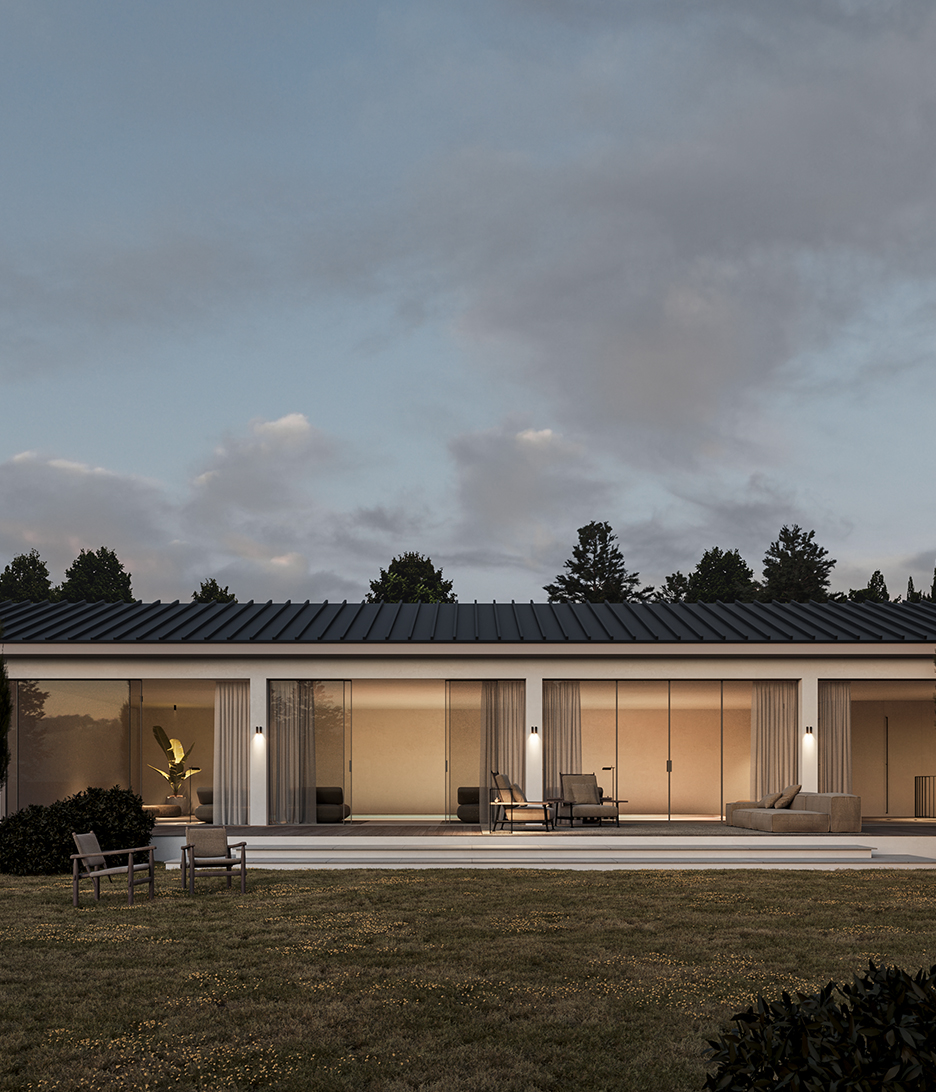


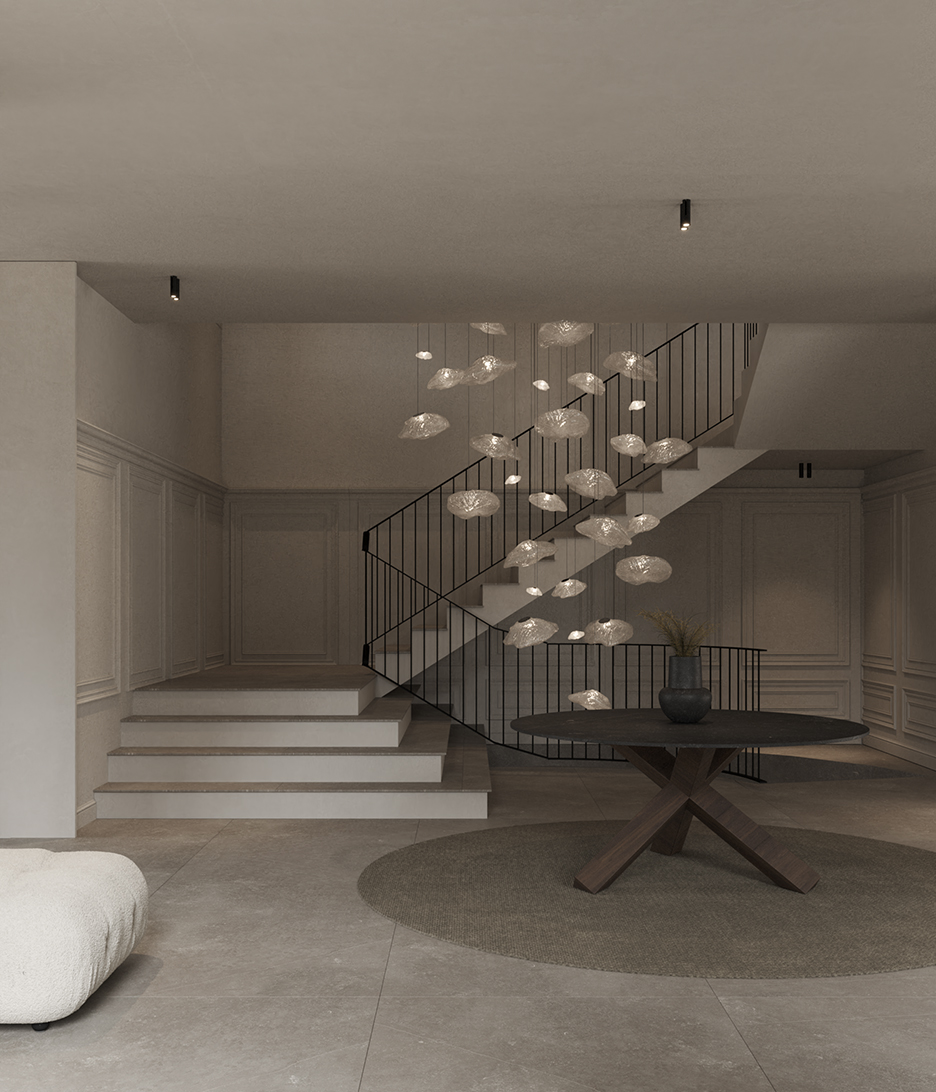
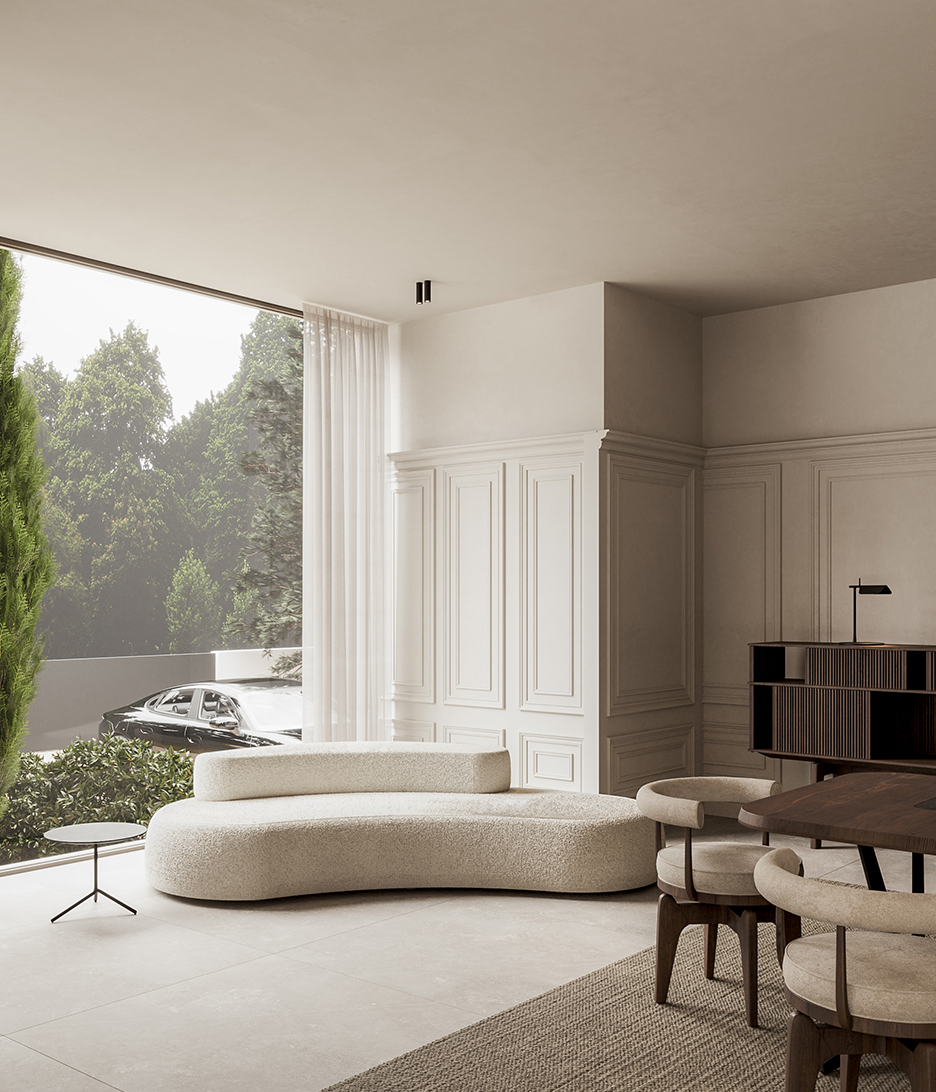


The house is distributed according to the privacy required of the different areas. The main entrance separates the areas from less to more privacy.

The entire interior distribution of the house was planned right from the beginning of the project.
We proposed an orderly sequence of spaces by permanently preserving the perspective and visual toward the outside of the house to assess the area’s spaciousness.
We proposed an orderly sequence of spaces by permanently preserving the perspective and visual toward the outside of the house to assess the area’s spaciousness.
The kitchen space was divided into two. On one side, we have the kitchen that represents a meeting space, designed to be seen as a complete dining room. It represents a more formal and orderly solution. On the other side, hidden from the dining area, we have a service kitchen. This space allows for more heavy-duty cooking and for the service staff.
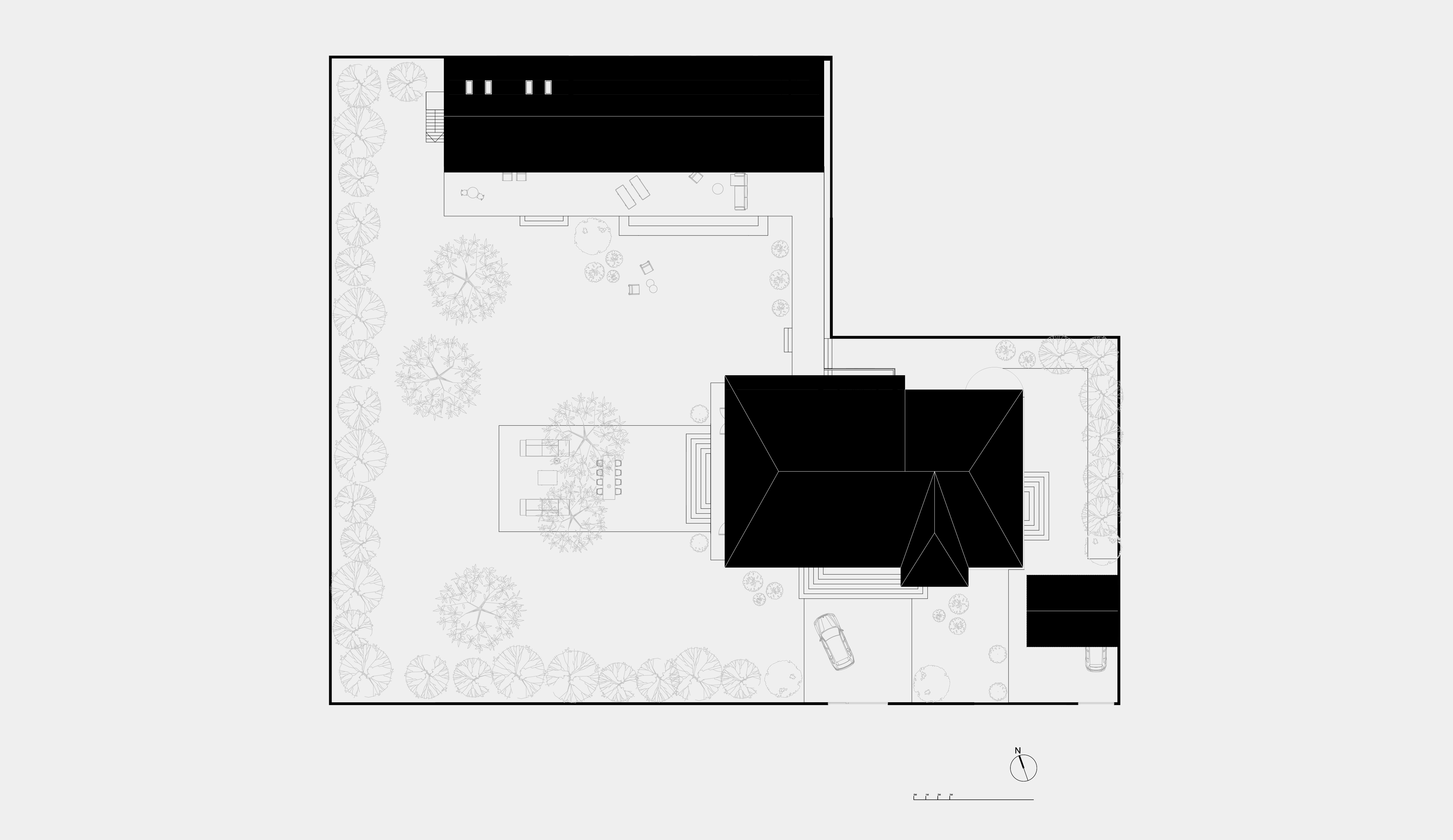
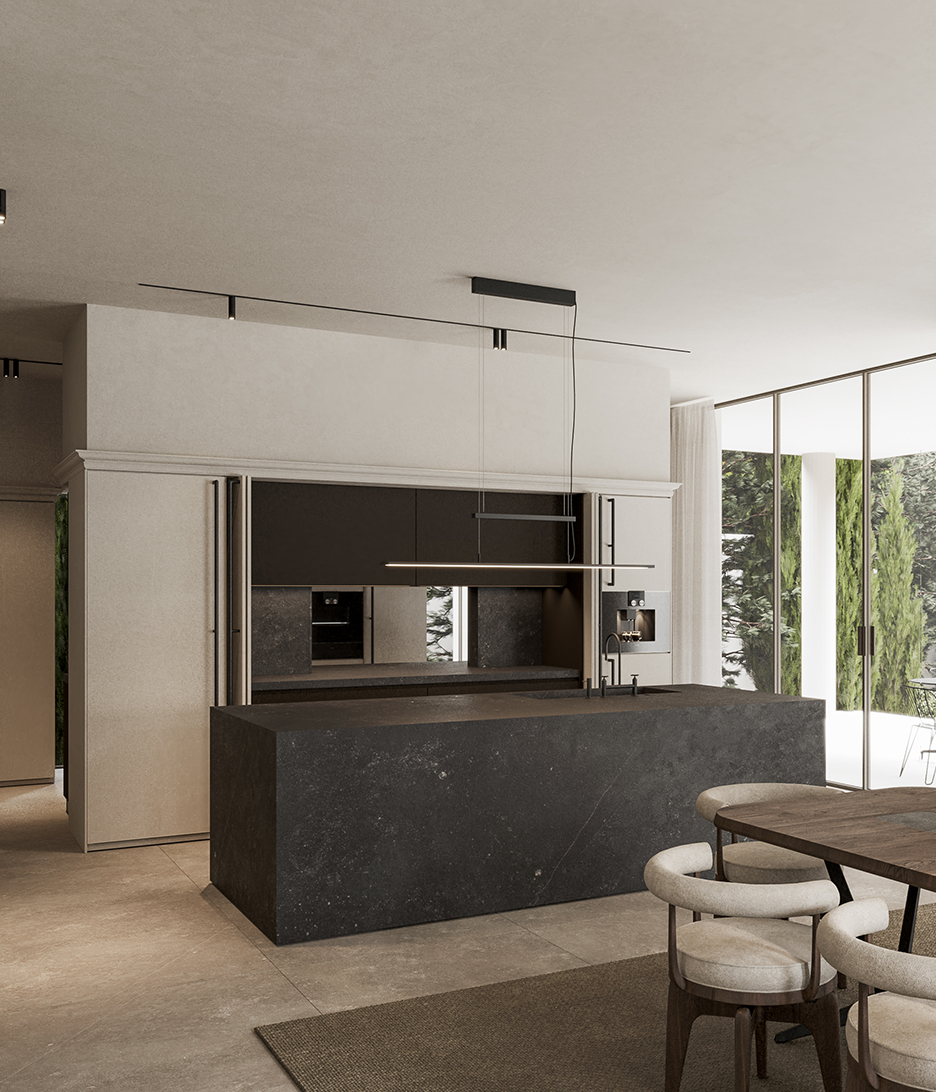
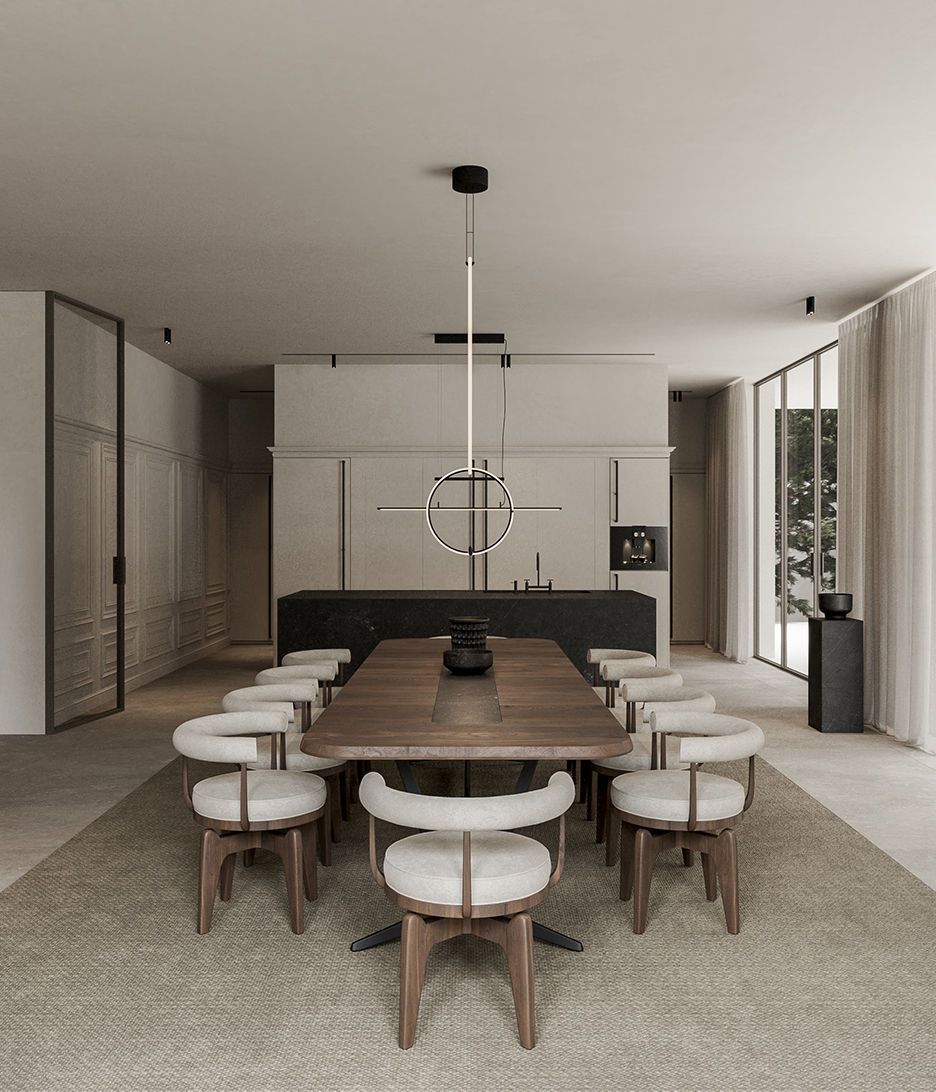



In the formal area of the house, we placed a small office. Thanks to the room’s formal stature, it becomes a quiet and private space, perfect for business meetings. One of the unique points of this office is that we can turn it into a guest’s room for sporadic use. The location of this room allows us to offer autonomy to the guests without compromising the privacy of the most social areas of the house.
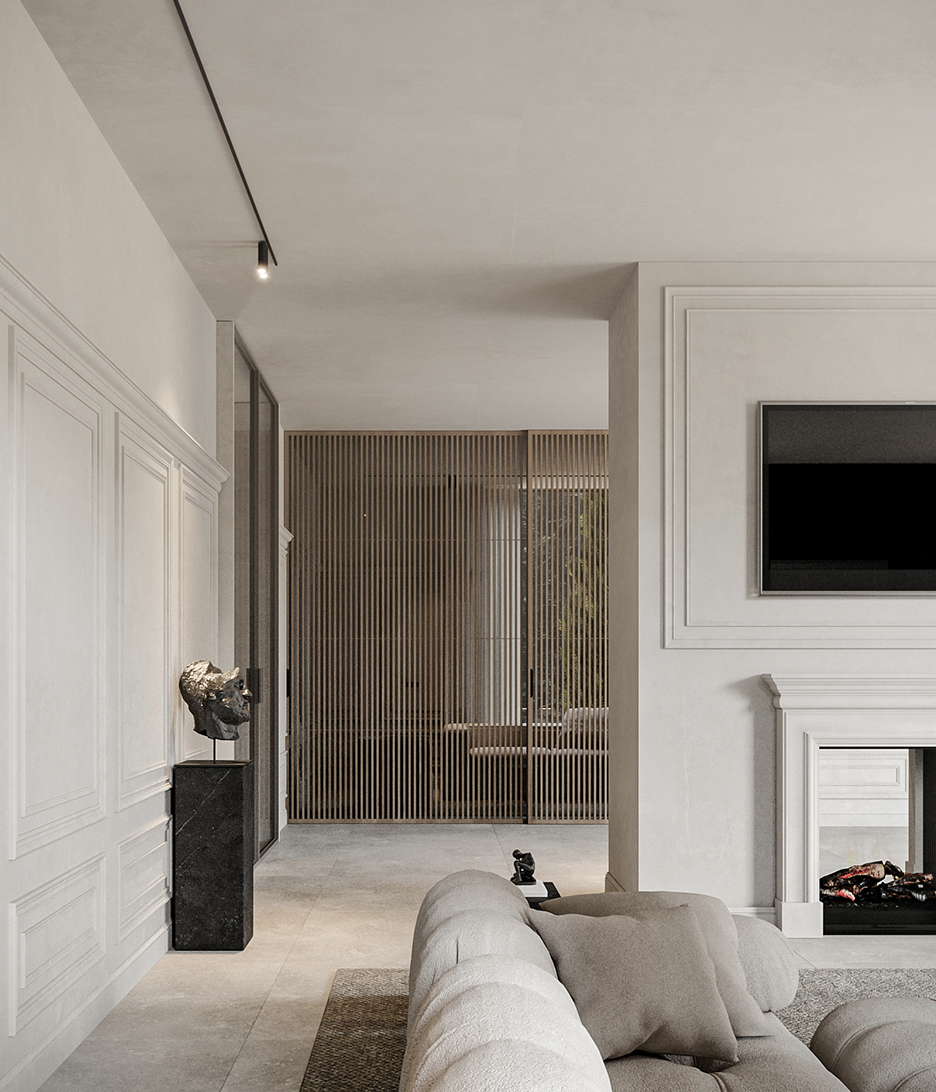
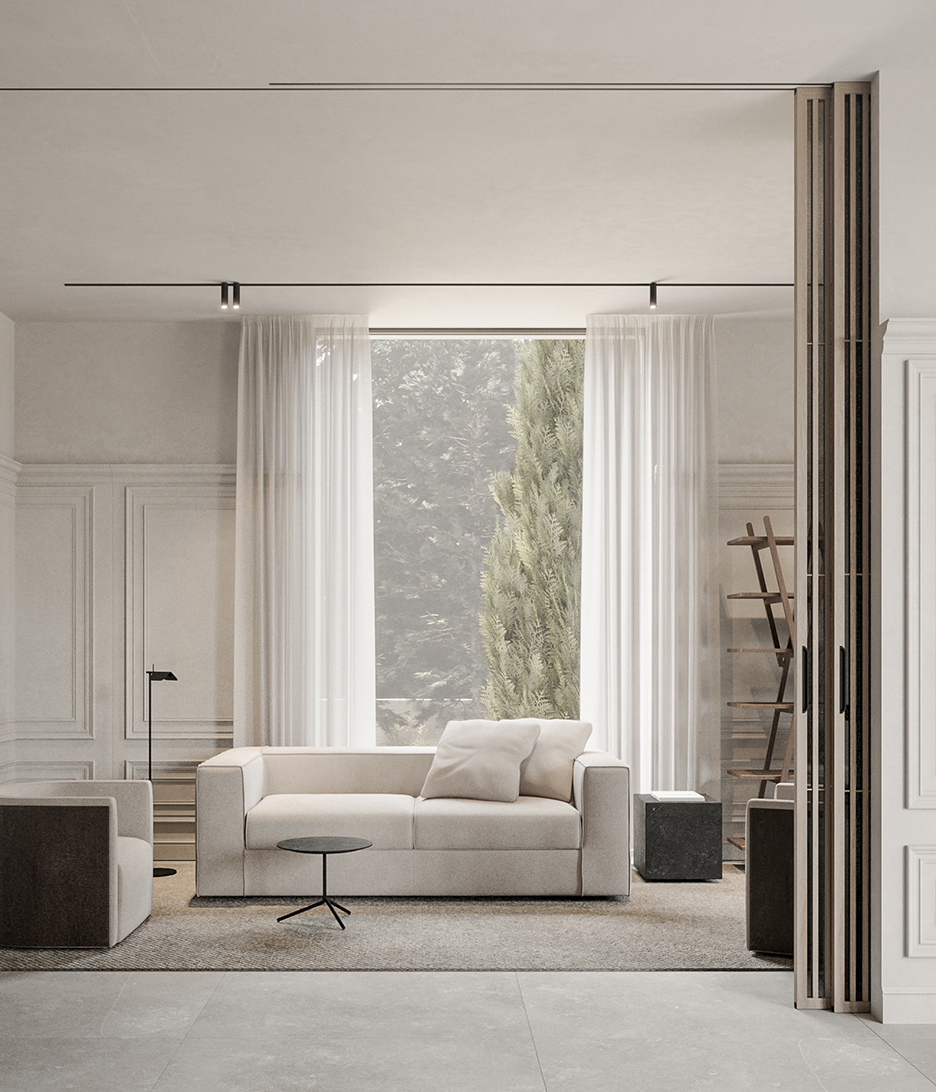


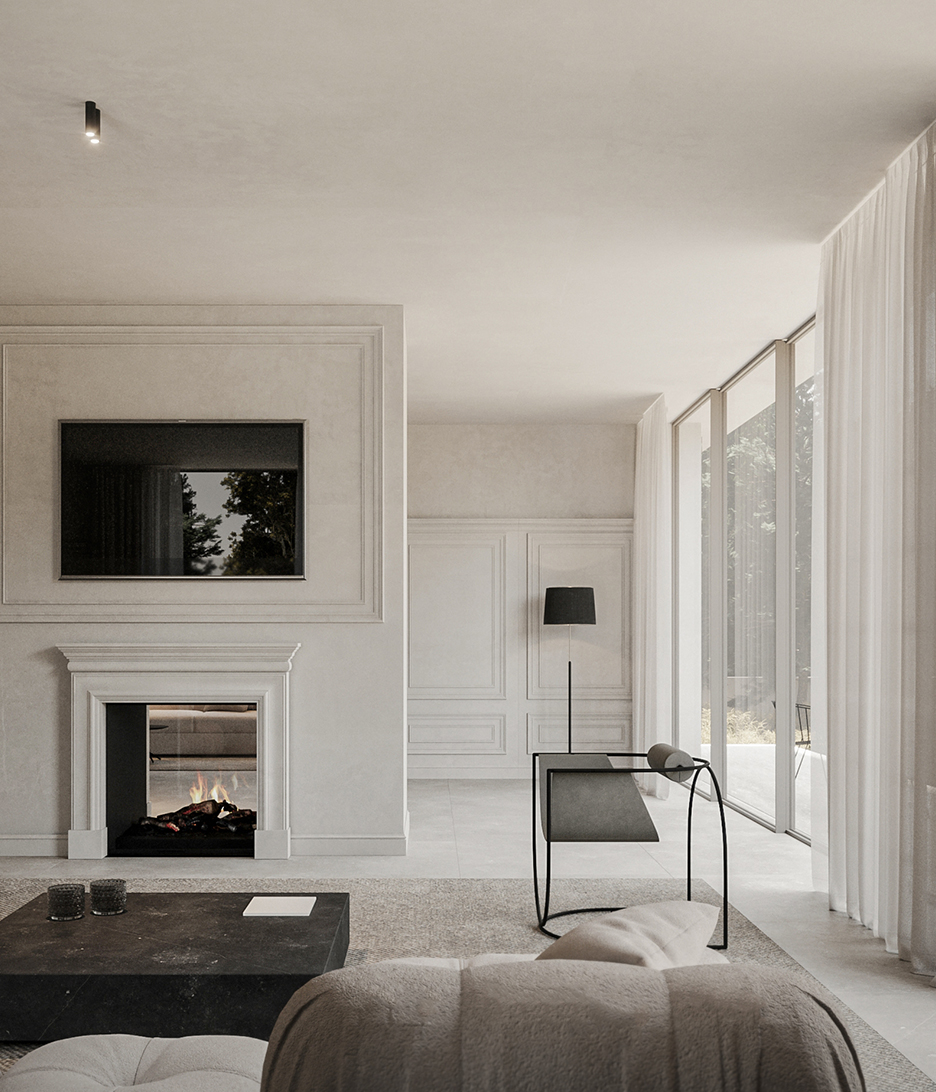
On our first attempt, we proposed a somewhat minimalist and contemporary style following our philosophy and vision that we would like to focus on our projects. However, our client wanted a project with a more classical style approach, with elements that break with such functional minimalism and was bereft of aesthetic details. Defining the interior design was complex since the client rejected our first proposal.
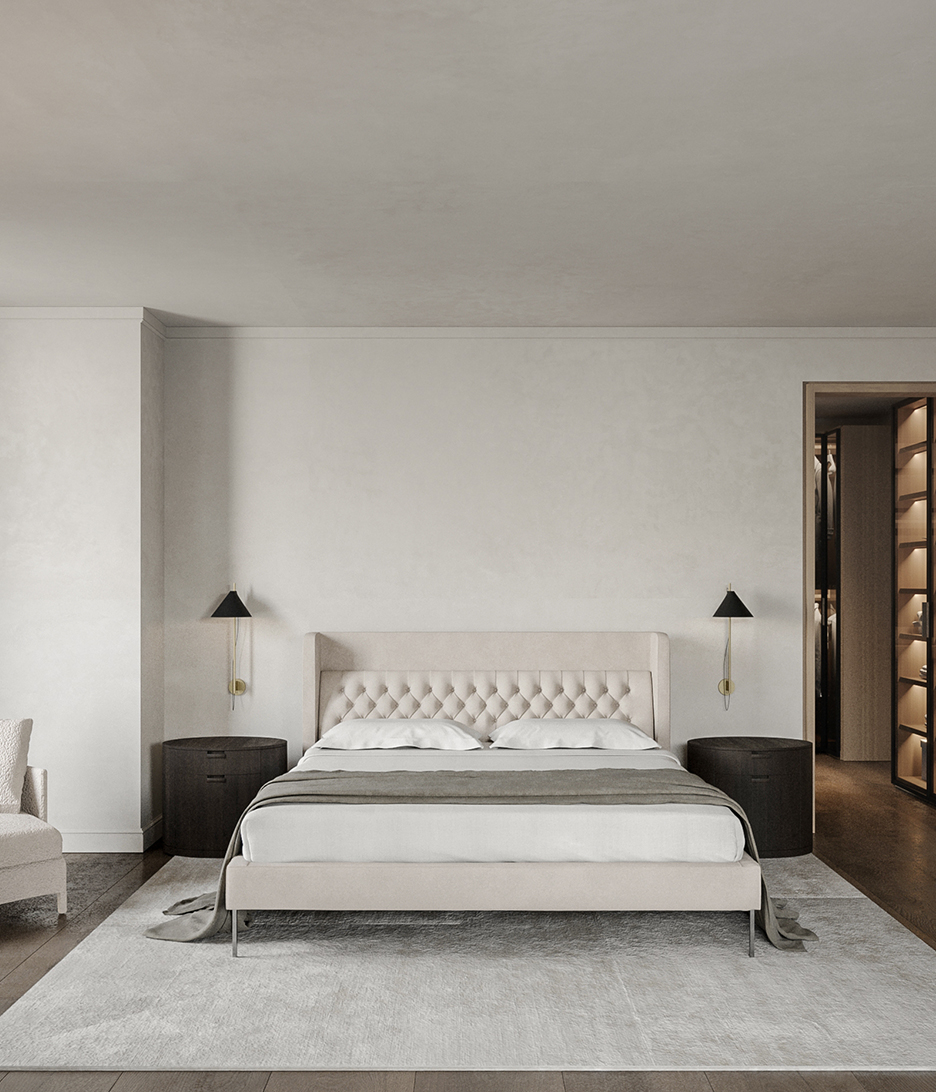
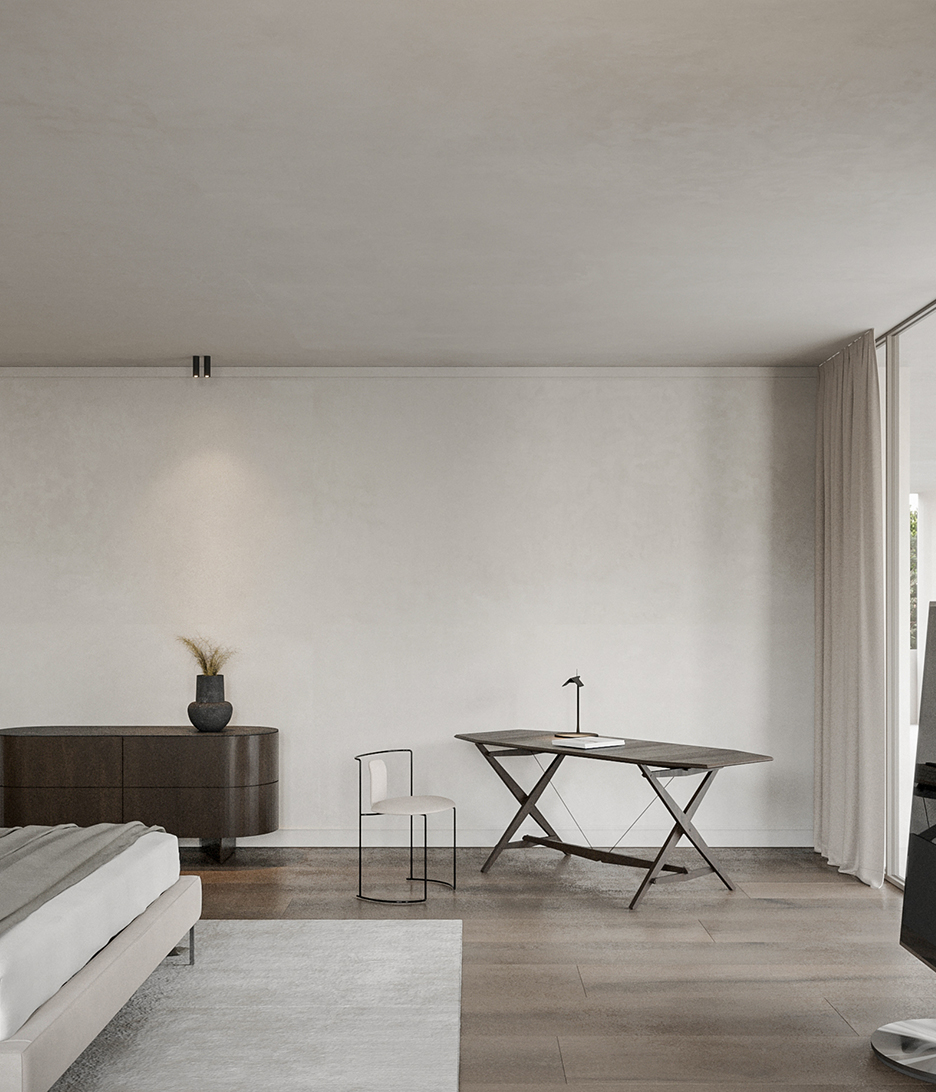


The second floor of the house is where all the bedrooms are located. The main staircase leaves us on a landing right in the center, where the four bedrooms are distributed. All rooms have a wardrobes area, desk, and a private bathroom. The master is larger than the others and occupies the best possible orientation, receiving direct natural light during most sunlight hours.
The pool next to the spa becomes a special area to use daily and escape from the city’s frenetic activity.
One of the unique aspects of this project is the indoor pool located on one of the sides of the garden and is separate from the main house. Our client’s requirement at the beginning of the project was decisive; of course, he wanted covered access from the home to the indoor pool.
